April 2019 Edition

Featured Project: Excelsior Avenue
Work has begun on abutment construction for an overcrossing at Excelsior Avenue in Kings County on Construction Package 2-3. Subcontractor Forefront Deep Foundations is pile-driving precast, prestressed concrete piles, 55 to 57 feet long, to begin the foundations for abutments and piers. The structure will take Excelsior Avenue traffic over future high-speed trains.
The reason contractors perform pile driving is that some types of soils are subject to liquefaction during an earthquake, which means the soils lose their strength or stiffness and behave like a liquid. Piles are driven deep into the ground so that they still provide support for a structure even if the soil around them doesn’t.
Updates Per Project
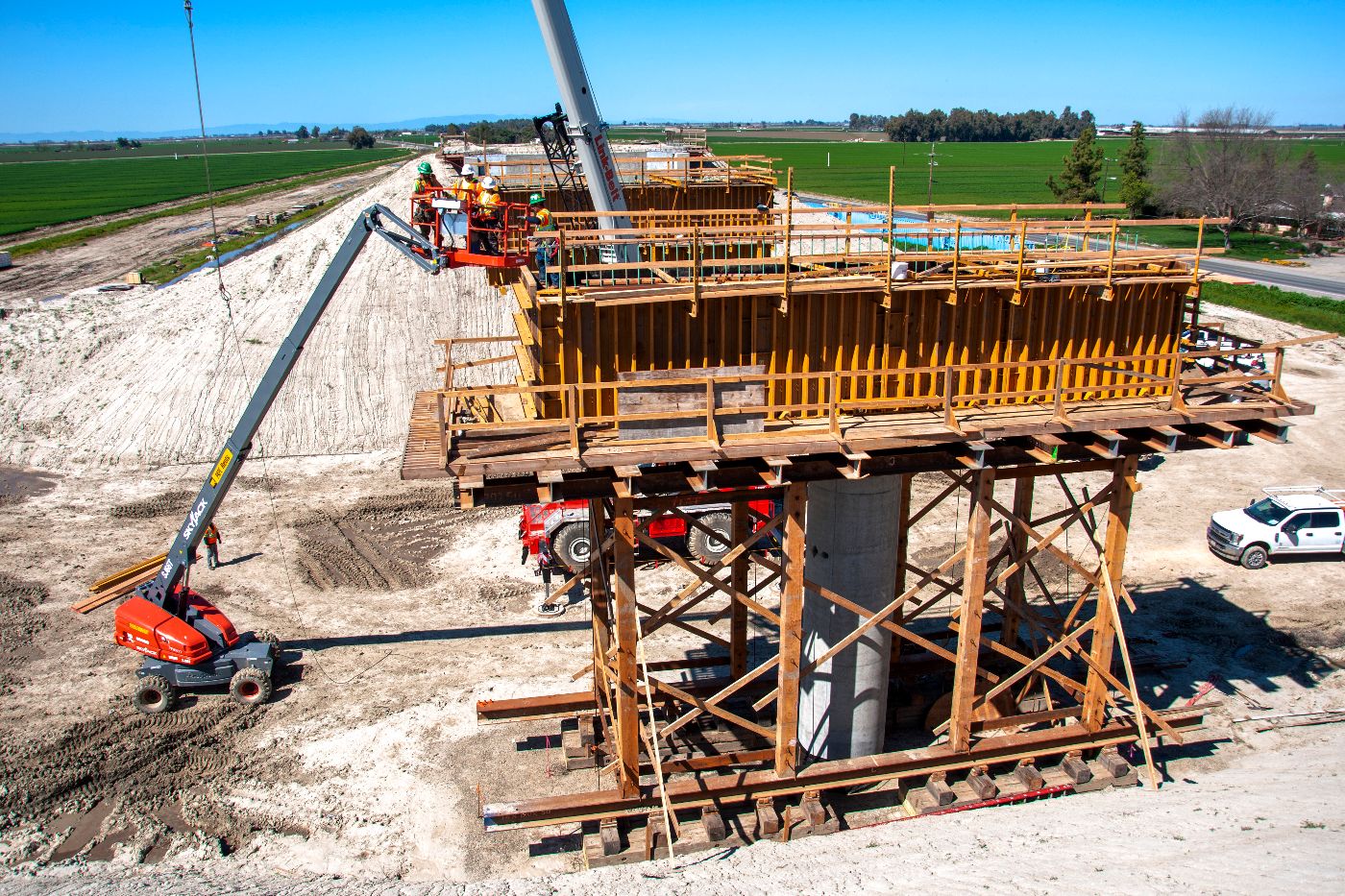
CP 2-3: Kansas Avenue Grade Separation
At Kansas Avenue, crews are putting the final touches on the pier cap forms in preparation for a concrete pour. Once the concrete is set the forms will be stripped and girders placed to form the foundation for the overcrossing’s superstructure.
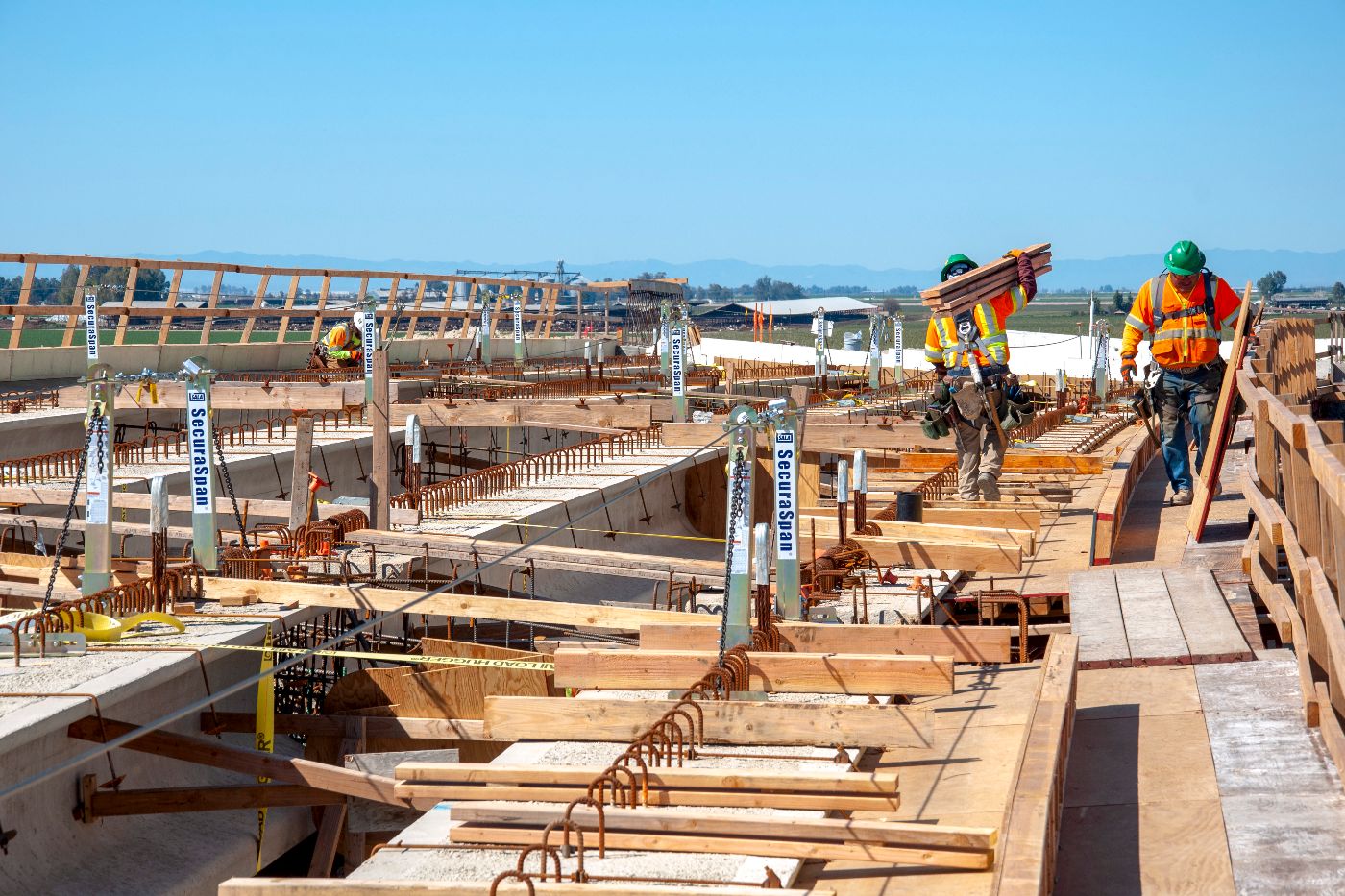
CP 2-3: Kent Avenue Grade Separation
With girders set, work gets underway constructing the deck of the overcrossing at Kent Avenue. Crews are tying rebar preparing for a concrete pour that will enclose the ends of the girders, while other members of the crew work on forming the deck.
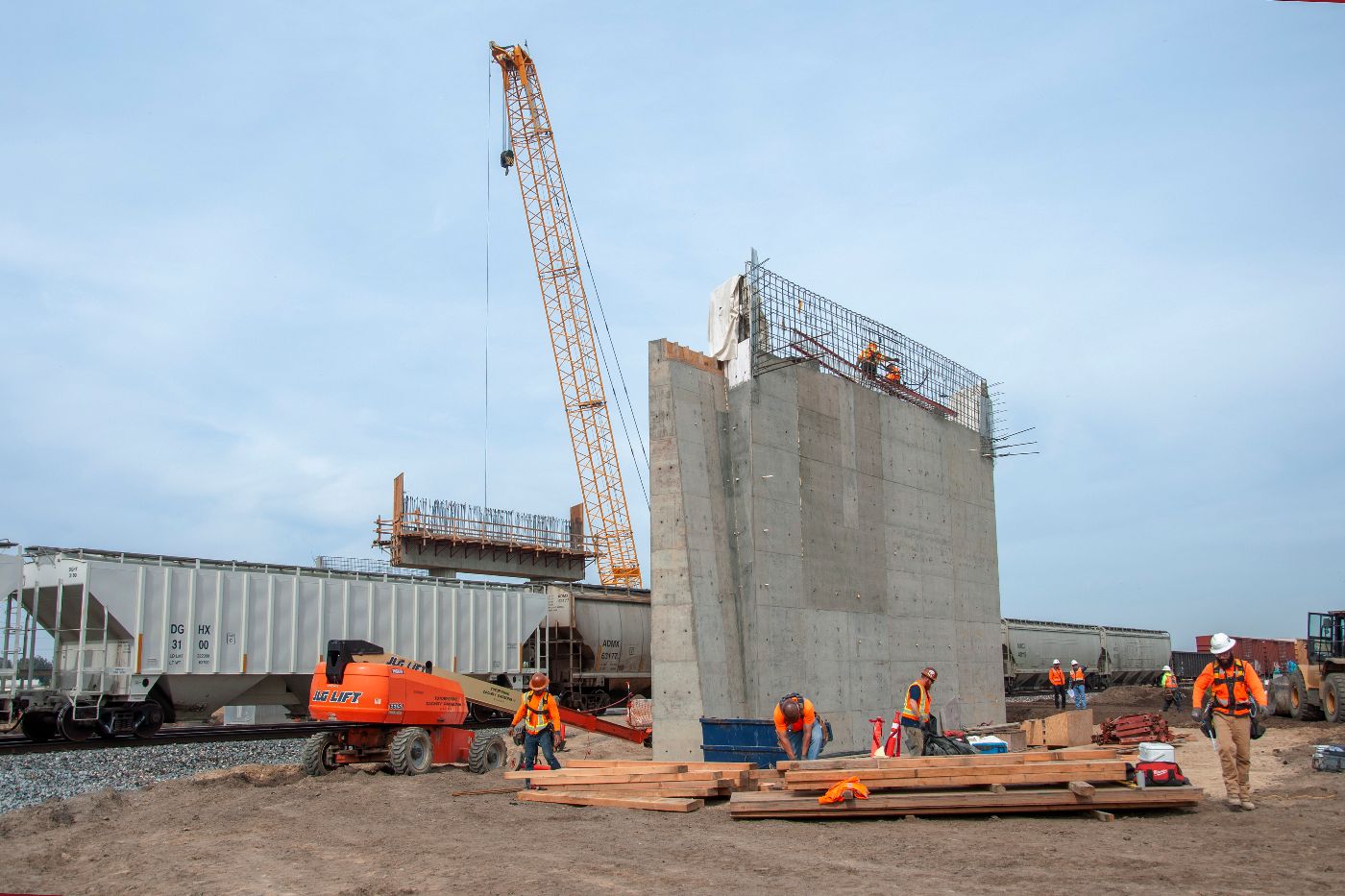
CP 1: Avenue 15 Grade Separation
At Avenue 15, workers have poured the bent cap on the west side of the overcrossing in addition to the eastern abutment. Two spans of girders were set over a couple of days at the end of March, with girders set over the railroad at night in coordination with BNSF railroad. The 35-foot tall, two-span structure will take traffic over the future high-speed train and the existing BNSF freight rail alignment.
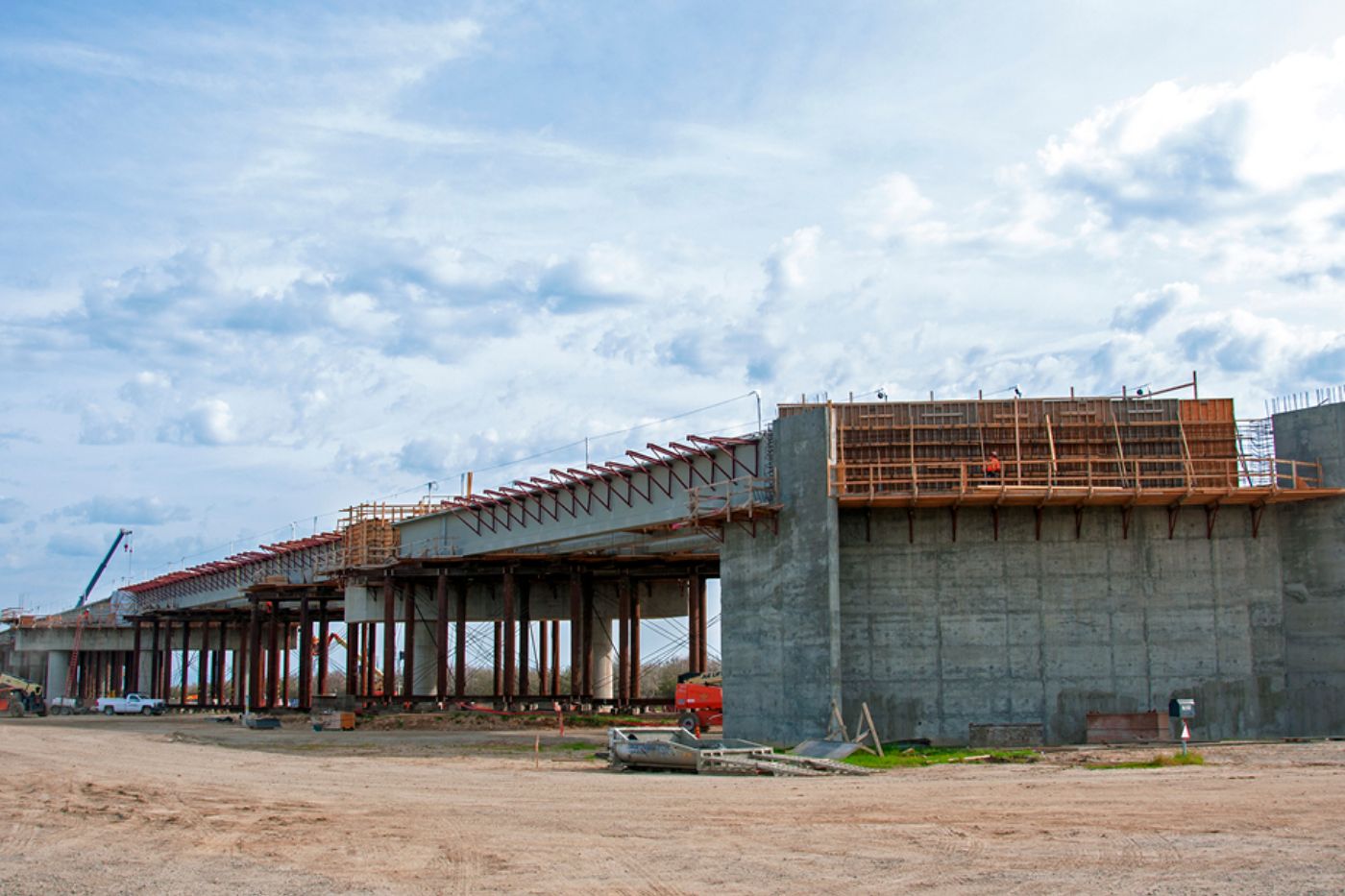
CP 1: Road 27 Grade Separation
At the northern end of Construction Package 1, crews have completed pouring concrete to connect the girder sections on the massive structure in Madera County, and are pouring diaphragms that laterally connect the girders for stiffening. Next, the contractor will be post-tensioning the girders. Post-tensioning is a way to reinforce the girders further. Steel cables are strung through ducts in the girders and are then pulled tight and tensioned. This structure is a spliced girder bridge which is unique to the area and was necessary due to the existing road geometry. Ultimately, the bridge will be nearly 650 feet long with frontage roads providing access to local homes along the sides.
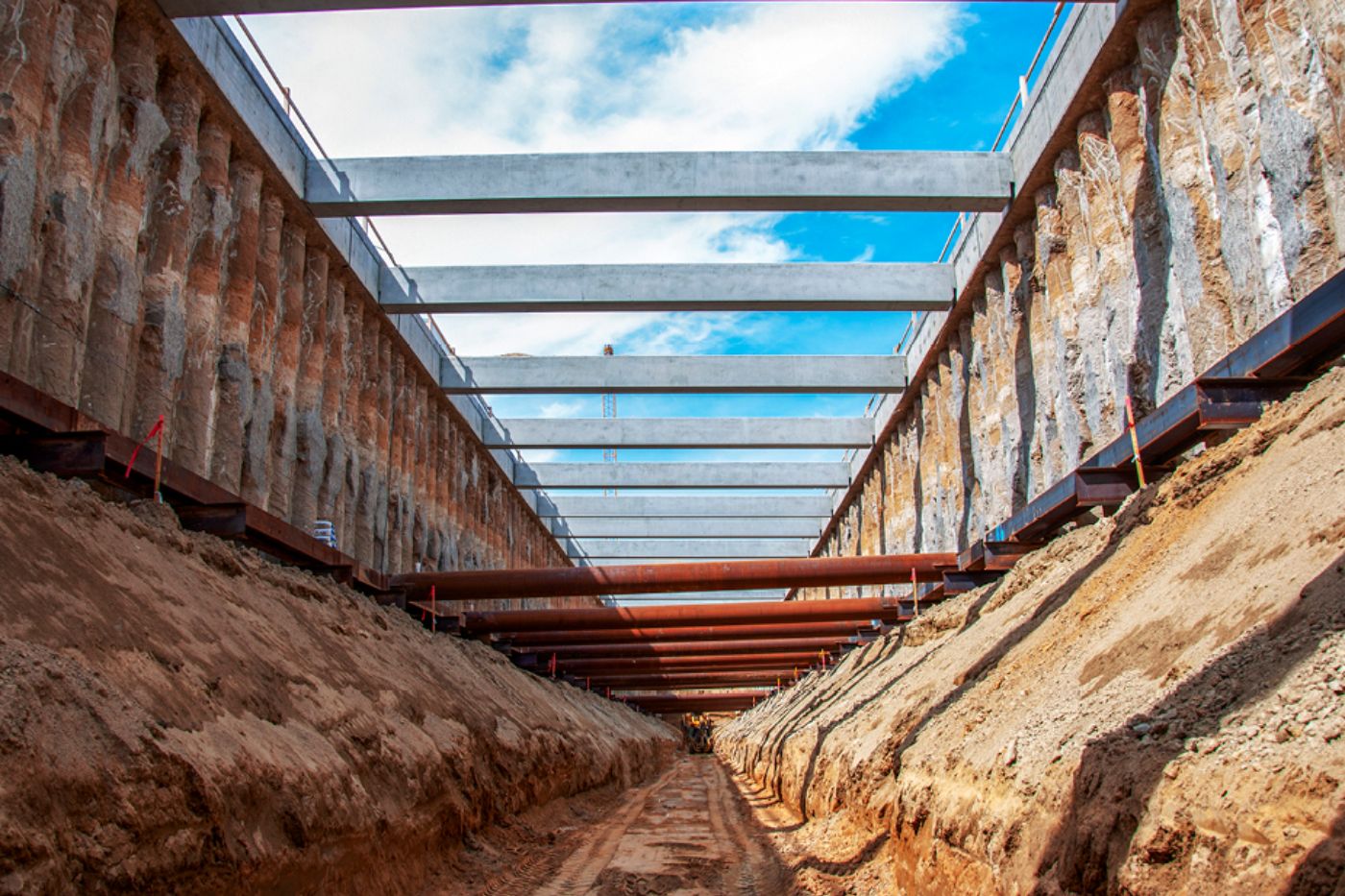
CP 1: Fresno Trench & SR 180 Passageway
A little north of downtown Fresno, workers on the US 180 trench are excavating along the trench north of SR 180 which is being lowered another 10 feet to get to the “floor”, or invert, of the trench. Work has also begun on construction of the “floor” of the concrete box that will carry trains under the highway, a rail spur and the Dry Creek Canal. Rebar crews have started to tie rebar that extends up the sides of the trench for the walls. The trench will extend approximately 1 mile in length.
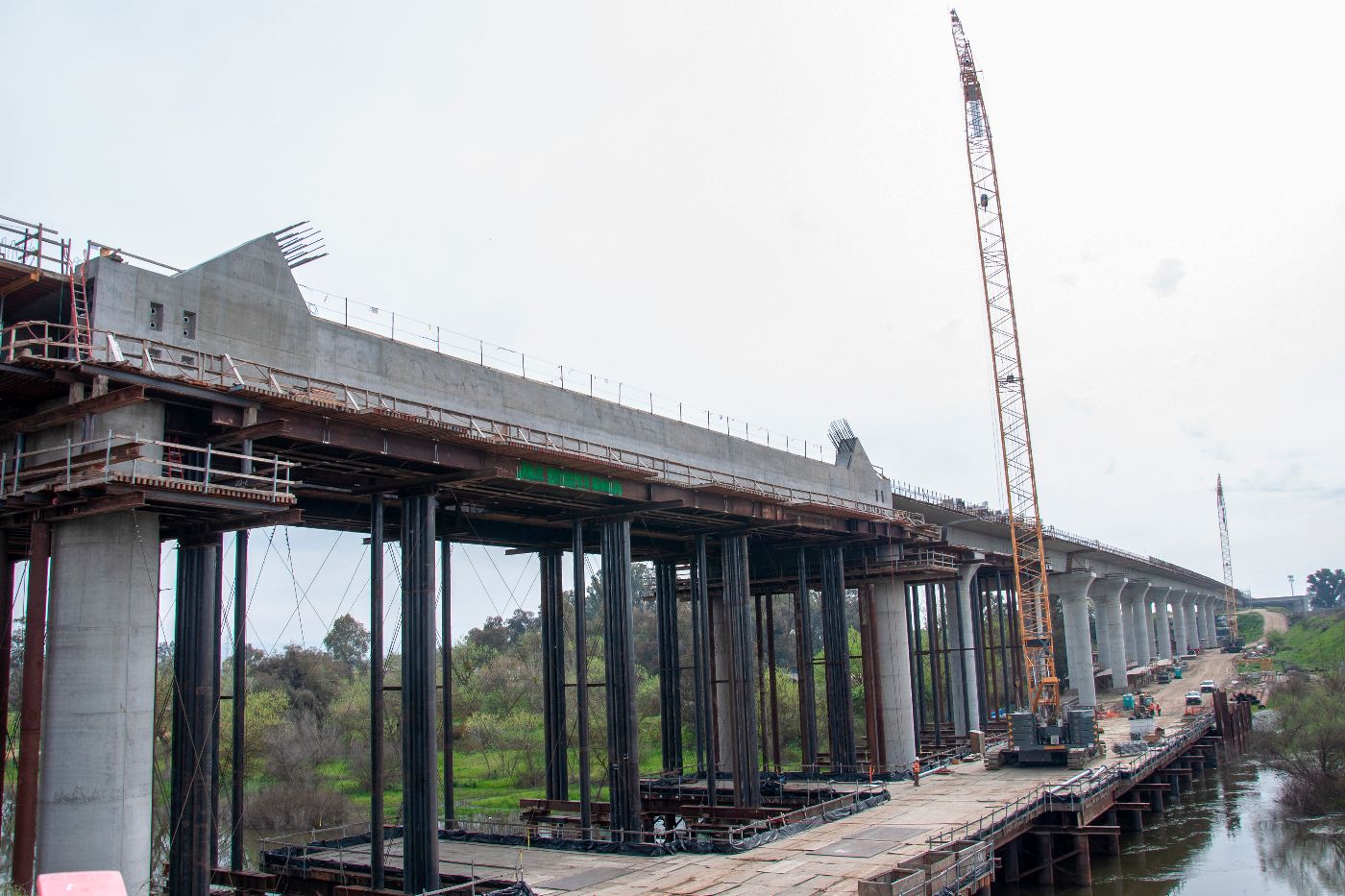
CP 1: San Joaquin River Viaduct
Crews are installing metal decking over the river, forming the floor of the San Joaquin River Viaduct. Once concrete has been poured to form the deck, work will begin on the signature arches that will serve as the “gateway” to Fresno County. The completed viaduct, nearly a mile in length, will be one of the largest structures on this first phase of the high-speed rail project.
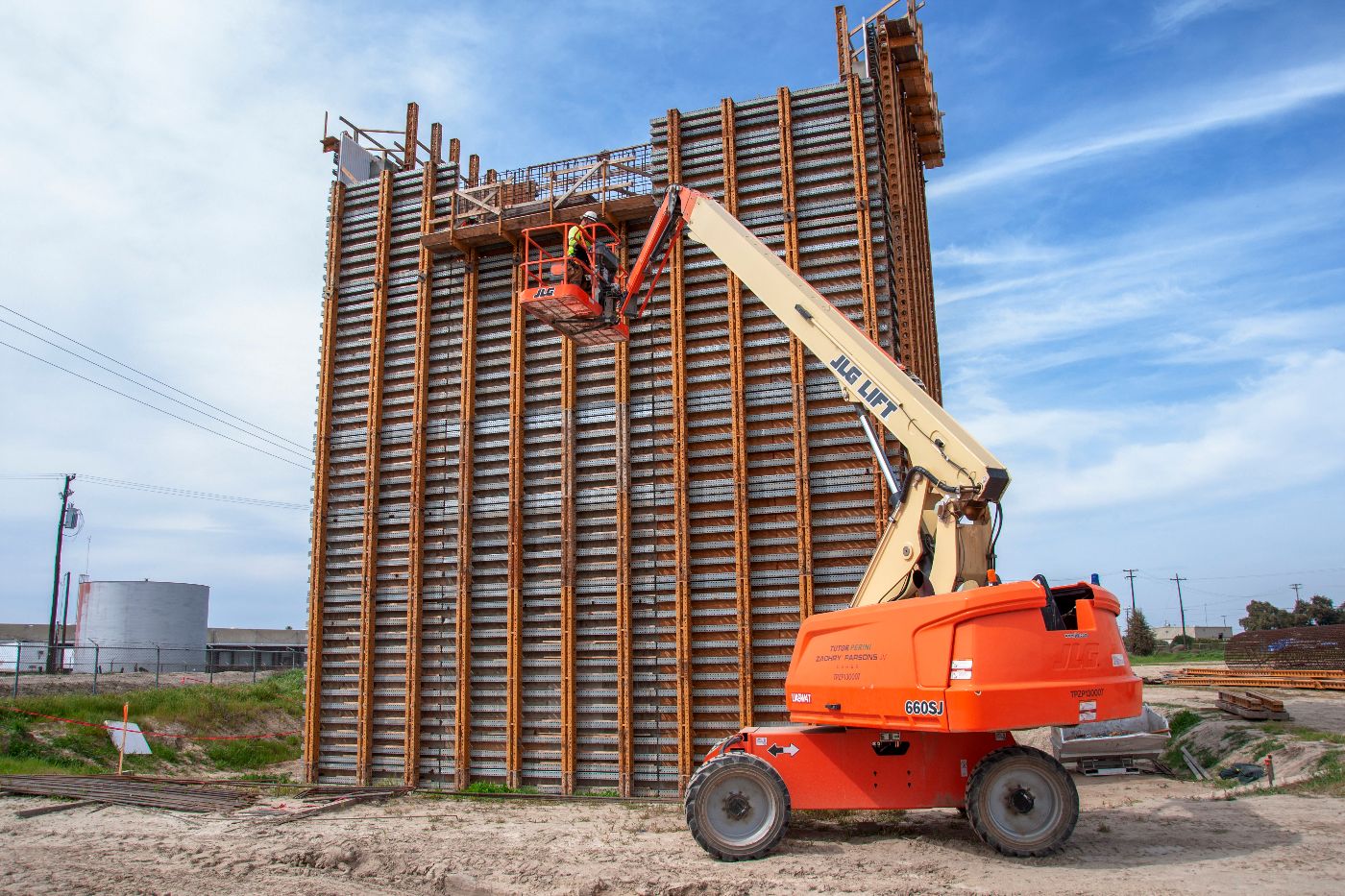
CP 1: Cedar Viaduct
At the Cedar Viaduct, crews are constructing an abutment at the north end of the structure. Fill dirt will eventually be placed to transition trains to and from grade level and the viaduct. The Cedar Viaduct will be about three-quarters of a mile long when it’s complete.